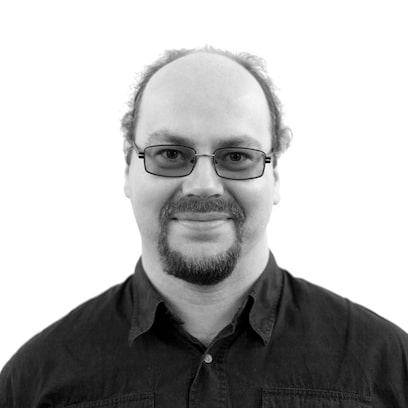Now for the fourth time OSDC started in Berlin with a warm Welcome from Bernd and a fully packed room with approximately 140 attendees. This year we made a small change to the schedule by doing away with the workshop day and having an additional smaller conference afterwards. The Open Source Camp will be on Foreman and Graylog, but more on this on Thursday.
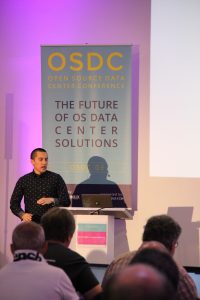
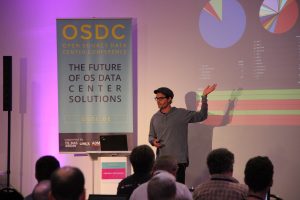
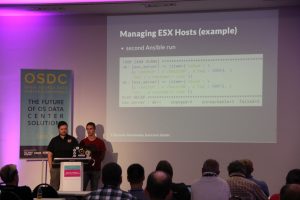
After lunch break I visited the talk about „OPNsense: the “open” firewall for your datacenter“ given by Thomas Niedermeier. OPNsense is a HardenedBSD-based Open Source Firewall including a nice configuration web interface, Spamhouse blocklists, Intrusion Prevention System and many more features. I think with all these features OPNsense has not to avoid comparison with commercial firewalls and if enterprise-grade support is required partners like Thomas Krenn are available, too.
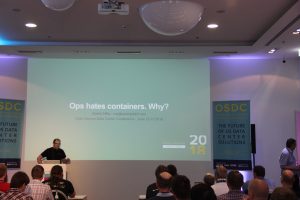
Anton Babenko in his talk „Lifecycle of a resource. Codifying infrastructure with Terraform for the future“ started were Mitchell’s talk ended and dived really deep into module design and development for Terraform. Me being not very familiar with Terraform he at least could convince me that it seems possible to write well designed code for it and it makes fun to experiment and improve with your own modules. Furthermore he gave tips for handling the next Terraform release and testing code during refactoring which are probably very useful for module authors.
„The Computer Science behind a modern distributed data store“ by Max Neunhöffer did a very good job explaining theory used in cluster election and consensus. The second topic covered was sorting of data and how modern technology changed how we have to look at sorting algorithm. Log structured merge trees as the third topic of the talk are a great way to improve write performance and with applying some additional tricks also read performance used by many database solutions. Fourth section was about Hybrid Logical Clocks to solve the problem of system clocks differing. Last but not least Max talked about Distributed ACID Transactions (Atomic Consistent Isolated Durable) which are important to keep data consistent but are quite harder to achieve in distributed systems. It was really a great talk while only covering theoretical computer science Max made it very easy to understand at least basic levels and presented it in way getting people interested in those topics.
After this first day full of great talks we will have the evening event in a sky bar having a good view of Berlin, more food, drinks and conversations. This networking is perhaps one of the most interesting parts of conferences. I will be back with a short review of the evening event and day 2 tomorrow evening. If you want to have more details and a more live experience follow #osdc on Twitter.
